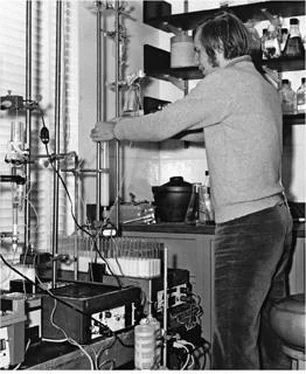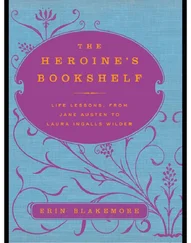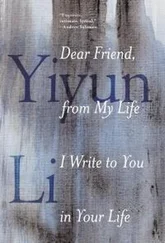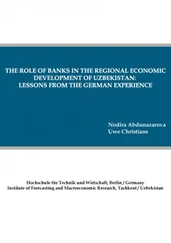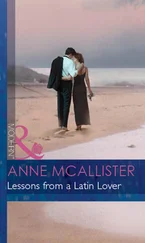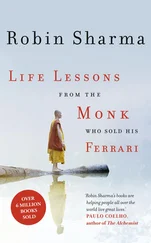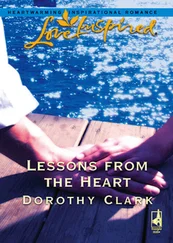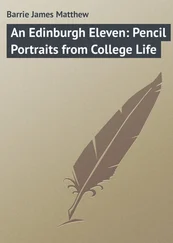James Watson - AVOID BORING PEOPLE - Lessons from a Life in Science
Здесь есть возможность читать онлайн «James Watson - AVOID BORING PEOPLE - Lessons from a Life in Science» весь текст электронной книги совершенно бесплатно (целиком полную версию без сокращений). В некоторых случаях можно слушать аудио, скачать через торрент в формате fb2 и присутствует краткое содержание. Жанр: Биографии и Мемуары. Описание произведения, (предисловие) а так же отзывы посетителей доступны на портале библиотеки ЛибКат.
- Название:AVOID BORING PEOPLE: Lessons from a Life in Science
- Автор:
- Жанр:
- Год:неизвестен
- ISBN:нет данных
- Рейтинг книги:5 / 5. Голосов: 1
-
Избранное:Добавить в избранное
- Отзывы:
-
Ваша оценка:
- 100
- 1
- 2
- 3
- 4
- 5
AVOID BORING PEOPLE: Lessons from a Life in Science: краткое содержание, описание и аннотация
Предлагаем к чтению аннотацию, описание, краткое содержание или предисловие (зависит от того, что написал сам автор книги «AVOID BORING PEOPLE: Lessons from a Life in Science»). Если вы не нашли необходимую информацию о книге — напишите в комментариях, мы постараемся отыскать её.
AVOID BORING PEOPLE: Lessons from a Life in Science — читать онлайн бесплатно полную книгу (весь текст) целиком
Ниже представлен текст книги, разбитый по страницам. Система сохранения места последней прочитанной страницы, позволяет с удобством читать онлайн бесплатно книгу «AVOID BORING PEOPLE: Lessons from a Life in Science», без необходимости каждый раз заново искать на чём Вы остановились. Поставьте закладку, и сможете в любой момент перейти на страницу, на которой закончили чтение.
Интервал:
Закладка:
Photoreactivation discussions dominated the Oak Ridge meeting. Albert Keiner talked about results that he had rushed to publish upon learning that Renato Dulbecco also had found photoreactivation. Renato, believing that his discovery had been made effectively independent of Kelner's, initially did not refer to him in a short note later prepared for publication in Nature. Upon then reading Dulbecco's proposed phage photoreactivation manuscript, Keiner felt robbed. In his eyes, Dulbecco must have been influenced by his prior work as
reported in his letter to Luria. Immediately responding to Kelner's unhappiness, Renato revised his Nature note to cite prior knowledge of Kelner's observation.As soon as I got back to Bloomington, I felt I had to re-convince Luria that I could do meaningful science. So I stopped irradiating impure phage solutions capable of generating peroxides and instead focused on the biological properties of purified phages killed by shortlived free radicals. Soon I had irrefutable evidence that they truly differed from phages killed directly by X-rays. Not only were several damaging events needed to inactivate them, but when so killed, they were incapable of multiplicity reactivation.
By then I was eagerly anticipating going to Caltech for the summer. The phage group would have gone back to Cold Spring Harbor except for Manny's expecting the second Delbrück child in August. Her need to be in Pasadena provided the perfect excuse for a summer in California. Renato's trip, however, was to be one-way since Max had just induced him to move there with the promise of greater intellectual independence and stability than he now had at Indiana. In the meantime, I was finishing up assisting in the bird course, knowing by then where to lead field trips toward the crow-sized pileated woodpecker. Because of its more southerly range I had never been able to see one around Chicago.
The day-and-a-half train trip to California was largely sleepless, and through the train's windows I began to spot magpies and lark buntings as the cornfields gave way to prairie land. I was more than groggy upon my arrival at the Athenaeum, Caltech's faculty club. Its upstairs loggia housed a row of camp-like cots, one of which was to be my cheap berth for the summer. Upon dropping off a rucksack filled with all my possessions, I made the short walk to the Kerckhoff Laboratory, built twenty years before to house biologists brought together by T. H. Morgan, who came to Caltech in 1928. Morgan had been dead now four years, and the new head of the Biology Division, George Beadle, had been brought down from Stanford to bring Caltech into the era of the genetics of microorganisms.
One of Beadle's first moves was to entice Max to move back to Caltech. Beginning late in 1946, he and Manny lived only ten minutes
away by foot, in a new one-story ranch-style home they built on one of the few remaining vacant lots near Caltech. When I first went there for supper, I was much impressed by the large main room with a fireplace graced by a large painting done by Jeanne Mammen, a Berlin friend of Max's from the 1930s. Before Hitler's rise to power, she drew and painted the demimonde, but such art would have been degenerate according to Nazi orthodoxy, and the painting now dominating the Delbrück sitting room drew inspiration from Picasso's classical canvases of the 1920s. Much less memorable was Manny's food. She was not one to pore over cookbooks while Max was back at the lab for seminars. Mexican-spiced ground meat and lots of avocados satisfied her and Max, eating being more a practical necessity than a pleasure for them. They cared more about quality in conversation, chamber music, and tennis partners, and were thrilled by the smells and sights of the California outdoors.Salva would not be arriving for another two weeks, and I wanted to greet him with new experiments on phages killed by hydrogen peroxide. Studying it in Bloomington was never high on the agenda Luria had set for me; my few such experiments were done virtually by stealth. Tantalizingly they hinted that peroxide-killed phages had biological properties identical to those inactivated by X-ray-irradiated bacterial lysates. If so, there would be good reason to believe that organic peroxides were the phage-killing molecules present in my irradiated phage lysates. Working then on the lab bench next to me was Günther Stent, already a year in the Delbrück lab, studying how tryptophan influenced the attachment of phage T4 to E. coli cells. Also there was the French scientist Elie Wollman, whose Jewish parents, scientists themselves, had perished in the Nazi camps. Wollman never felt at ease with the young German chemist Wolf Weidel, who cohabited with him in their laboratory room. But Günther, though also Jewish, soon became good friends with Wolf, whose Teutonic upbringing made it painful for him to call Max by his first name.
Getting reproducible survival curves took more time than I anticipated, and the Lurias arrived before I had results to show Salva. Subsequent nonstop lab orgies, during which I was in the lab long past midnight, alternated with manic weekend car trips instigated by the
indefatigable Carleton Gajdusek, who had completed his degree at Harvard Medical School two years before and now was supposedly getting postdoctoral experience in both Max's lab and the chemist John Kirkwood's. My first such camping trip ended when the corrugated road gave out five hours below Ensenada in Baja California. Two weekends later, we embarked on an even more insane nonstop drive to Guaymas on the Gulf of California. There for the first time I saw huge man-of-war birds circling over the harbor. A primitive ferry ride across the Rio Yaqui interrupted our journey onward to Ciudad Obregón, where no-degree temperatures finally persuaded Carleton that you could die from the heat. On subsequent weekends, Carleton's extreme traveling turned toward the much cooler Sierras, where on one occasion the rest of our party reached the summit of Mt. Whitney long after he had gone on and descended into a valley to the west.Such weekends away kept my morale high long after I'd reached the inescapable conclusion that Pasadena was strictly for retirees. Indeed, the average age of the residents in Caltech's hometown was higher than that of any other American city of note. Even on the Caltech campus it was hard to detect a pulse outside the labs and libraries. Social life was most accurately described as nonexistent. Mindful of this reality, Günther Stent had moved into a canyon house above Caltech occupied by several European postdocs. In this way, he entered into the orbit of the younger chemists associated with Linus Pauling. Late that summer Linus, after virtually bumping into me at the Athenaeum, gave me a big grin. Initially I assumed that Max and Linus must have interacted often, since when Max first arrived he and Linus coauthored a short note to Science attacking the notion that putative like-with-like attractive forces would play a role in copying genetic information. More recently Max had become wary of Pauling's self-aggrandizement, though he always remained alert to reports of what Linus was up to from his postdocs.
Of all the phage crowd gathered there, I was most at ease with the Doermanns. The high point of my summer came in late August when, on the Athenaeum courts, I took two tennis sets from Gus. In the evenings we would often go into central Pasadena to a restaurant where we had earlier spotted two striking blondes about my age. They,
however, never reappeared, nor did our two-hour-long drive to the Pacific Coast beach next to Caltech's marine station at Corona del Mar prove more fruitful for girl-gazing. But at least by then I had accomplished my summer lab objective of showing that peroxide-treated phages had biological properties identical to those killed by X-ray-irradiated phage lysates.I was thus prepared to speak several days later before an afternoon phage group meeting presided over by Max. The week before, we had listened to the young physicist Aage Bohr talk about the philosophical implications of quantum uncertainties. Here he was a surrogate for his father, Niels, who first had mesmerized Max in the early 1930s. Besides Max, only Günther pressed Aage for more precise information about his father's supposed philosophical insights. In my back-row seat, I understood not a word of either Aage's thrust or Max and Gunther's counterarguments. In contrast, my talk about three types of X-ray-killed phages revealed no grand paradoxes, nor was much brainpower needed to understand my conclusions. Remembering acutely my April debacle in front of Szilard, I stuck to facts and was careful not to imply any form of breakthrough for radiation biology— much less toward understanding the gene.
Читать дальшеИнтервал:
Закладка:
Похожие книги на «AVOID BORING PEOPLE: Lessons from a Life in Science»
Представляем Вашему вниманию похожие книги на «AVOID BORING PEOPLE: Lessons from a Life in Science» списком для выбора. Мы отобрали схожую по названию и смыслу литературу в надежде предоставить читателям больше вариантов отыскать новые, интересные, ещё непрочитанные произведения.
Обсуждение, отзывы о книге «AVOID BORING PEOPLE: Lessons from a Life in Science» и просто собственные мнения читателей. Оставьте ваши комментарии, напишите, что Вы думаете о произведении, его смысле или главных героях. Укажите что конкретно понравилось, а что нет, и почему Вы так считаете.
